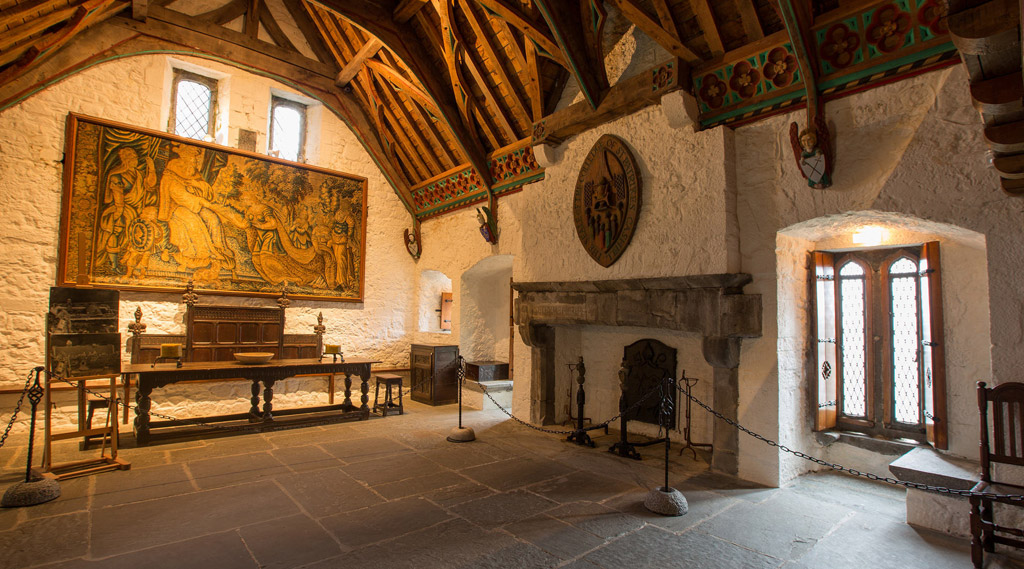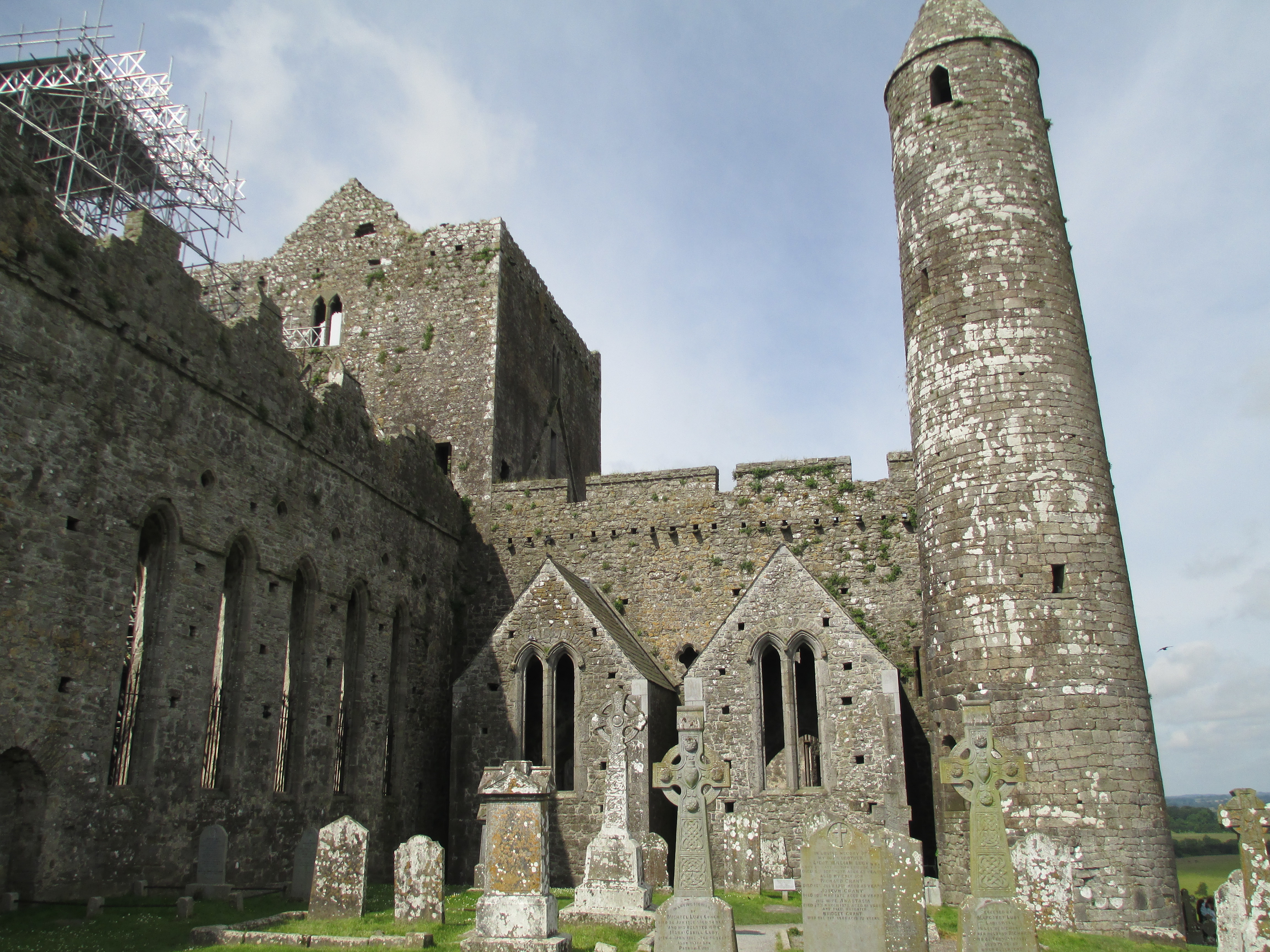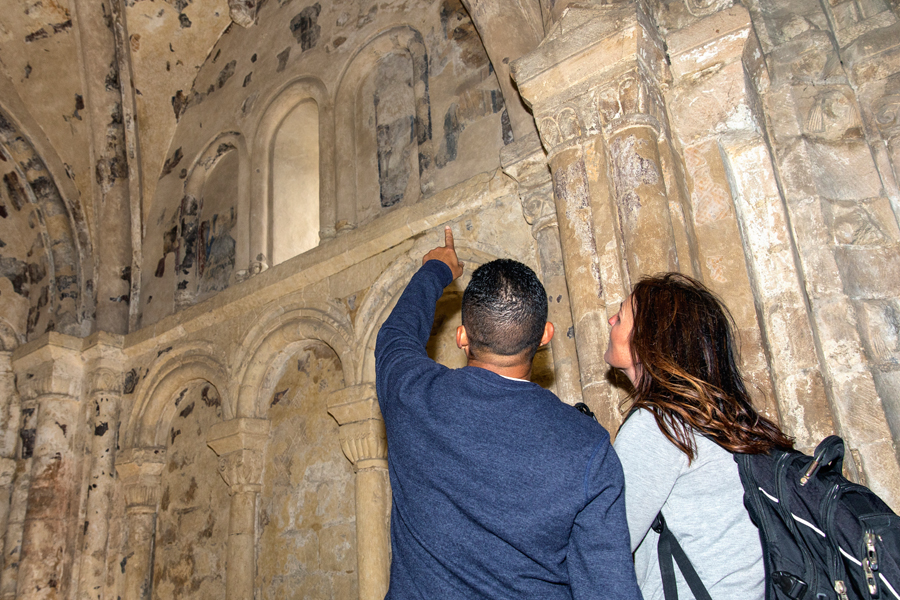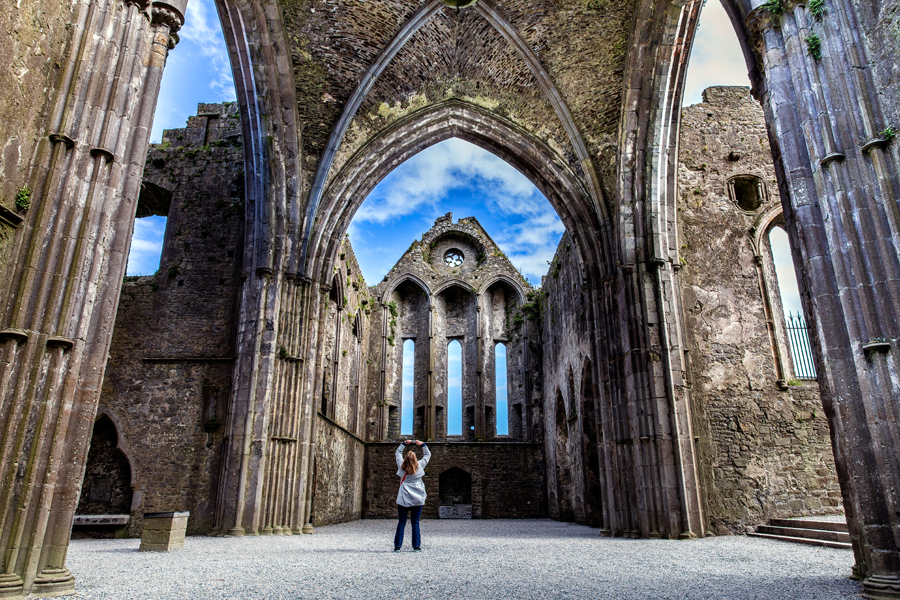
Rock of Cashel
.jpg)
The Rock of Cashel established, according to folklore, by St. Patrick himself initially was a fortress owned by the O’Brien clan from the Kingdom of Thomond. The site was handed over to the church in the late 1100s by Murdoch O’Brien, realising he was losing control of his kingdom, offered this site to the church rather than surrender it to his enemies. Today, this multi-period site contains a Bell Tower from the 1100s, Cormac’s Chapel from 1134, a 13th century cathedral as well as a 15th century Choir Hall. Visiting the site allows; entrance into all monastic ruins, the small museum inside which contains many of the relics of the times, the 17th century restored chapel and where possible a look at the audio visual guide about the site.
Patrick’s Rock/Devil’s Bit
Folklore tells a tale of St. Patrick and the Devil fighting for the souls of Ireland. St Patrick winning the battle of words enraged the Devil who flew 30 km from here and took a large bite from the mountains nearby. As St Patrick ran through the land the Devil spat this piece of rock out. It is said to have landed here where St. Patrick climbed to the top, blessed the ground. Thus it became known as St. Patricks Rock. There is a gap in the local mountains nearby they call the Devils bite.
The Hall of the Vicar’s Choir
This is the point of entry into the site. This 15th century addition was used as a practice and living area for choir members, who performed for Sunday Mass. It is the only surviving fully intact choir quarters in Ireland. Here you will also find the seal of the Bishop, which would be considered today as a credit card. The seal was used as a credit card in the village below, signing off all transactions as a charge to the Church to be paid off by the Bishop.
The Round Tower
The Bell Tower is the earliest structure still present today dating from 1101 and is a typical conical shape, which is one of 68 round towers to be seen in the country side today. Round towers were used as bell towers, look out points and beacons to pilgrims that would come from far and wide to visit. The Rock of Cashel was also the site of where the Senate of Cashel was held, the seat of the head of the church in Ireland for a time. These round towers were also a repository for the manuscripts and the book of records. Many of these Christian sites became great centres of learning where monks transcribed the gospels but also documented events in books known as The Annals, chroniclers of time. The towers were fitted with 4 floors with a staircase between each floor. The top of these towers contained a bell, the floor below often contained the manuscripts and further below still the important chalices and objects of the site. The entrance to the tower always faced the church or Cathedral. In later years many relics of important saints and monks would be on display in the church for pilgrims. St Cormac was the first of the O’Brien family to be ordained into the church and latter would become a saint.
Cormac’s Chapel
Cormac’s Chapel dating from 1134, is one of the best preserved examples of Irish Romanesque style buildings constructed before the Anglo-Normans. Its frescos and zigzag chevron designs reflects a very indigenous style. These structures would have been commissioned by the church, yet the frescos here have long since faded and a restoration project is under way to restore them to their former glory. 2021 is the anticipated completion of this project.
13th Century Cistercian Cathedral
The 13th Century Cistercian Cathedral is in a typical cross-shaped format with the choir facing east, for the Rising Sun at Easter, with a North and South transept, which was usually used for spaces of prayer and concentration. With The Rock of Cashel, you still have sedilia (a set of seats provide for the clergy only) where the priest would sit during the procession of the choir entering the church and a piscine, an indentation into the wall which held the sacred vessels used for Mass.
Notice the small hole in the bottom of this indentation, which was used to drain all leftover wine from Mass as it was believed that the wine would turn into the true blood of Jesus, which you could not spill again. This hole would direct the leftover wine into the Earth, so the blood of Jesus would not be spilled again.
Another interesting feature of this structure would be the holes one can see dotted throughout the stonework, which are called log holes. At the time of construction, many of these sites would not have scaffolding as it was unavailable. The builders would thus start building a wall by laying a slab of wood across the wall and building on top of it to make a natural stepping stone. This created a method of using the wall as part of the ladder system. Once the wall was finished, you would have multiple protruding wooden logs. They would be plastered and white-washed, adorned with brilliantly coloured paintings of biblical scenes. As the builder’s worked downwards, they would cut the slats of wood from the sides, so it was not visible and cover it with the whitewash. Time has rotted the wood allowing us to see this today.
Recent posts

.jpg)












